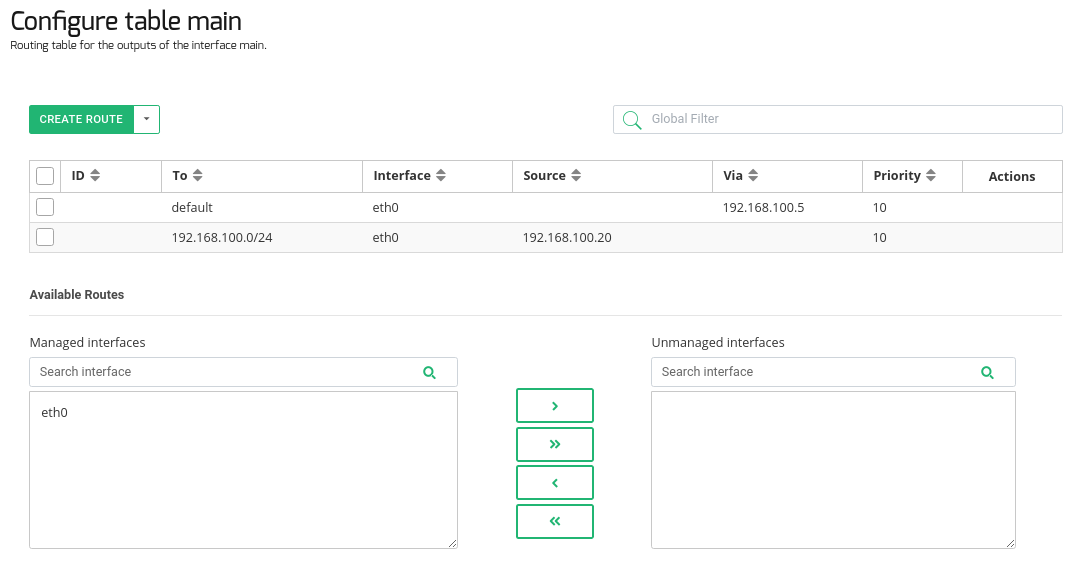This section shows the routing configuration tables of the Zevenet Load Balancer, from this section we can modify the routing table behaviour, adding new routes or deleting the already existing.
All the tables know the subnets of the already configured interfaces in the load balancer, so from any configured table the system can forward packets to the destination network through the same table. For example, eth0 manages the subnet 192.168.100.0/24 an eth1 manages 192.168.101.0/24, but tables table_eth0 and table_eth1 know the subnet of the other, so if a packet reaches a VIP in table table_eth0 with a backend in the network 192.168.101.0/24 (reachable through eth1), this table (table_eth0), which received the packet, will be able to forward the packet directly to the network 192.168.101.0/24 through the table table_eth0.
As we already said, all the tables know about the subnet of the other tables but if for any reason a subnet doesn’t need to be known through another table, then this network can be “unmanaged” in the selected table.
The configure Tables view is described below:
ID: An internal unique identifier, assigned by the system, it can’t be modified.
To: The destination IP or CIDR (IP/bitmask) where the packet is directed to.
Interface: Which interface to use to reach the destination previously configured in the field To.
Source: Based on the previous selection, which IP to choose to reach the destination configured in the field To.
Via: Next hop to reach the selected destination configured in the field To, the selected host has to know the path to the destination and has to be in the same network than Source.
Priority: The priority value of the rule, this value can be used to alter the verification order, the less value the most priority.
Actions: This field show icons to manage the already created rules, the default rules created by the internal system doesn’t show any action. The available actions are Edit. it allows modifying the already created route. Delete: it deletes the selected route.
Additionally to the routing table, this view shows a group of interfaces ordered in two groups, called “Managed interfaces” and “Unmanaged interfaces”, with this option the user can choose what interface is going to be managed by the current routing table, the managed interfaces are known and used for the current routing table, the network related to the managed interface will be reached directly by the routing table instead of using the default gateway. If for any reason it is not required to reach the network interface through this routing table, then the interface must be moved to “Unmanaged interfaces”, this configuration will delete any route for this interface in the current routing table.
